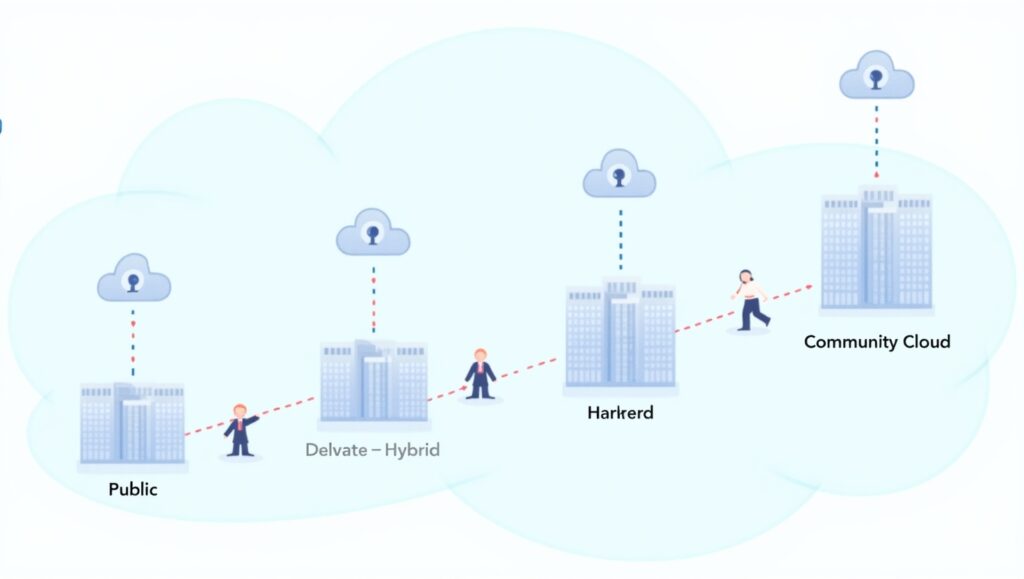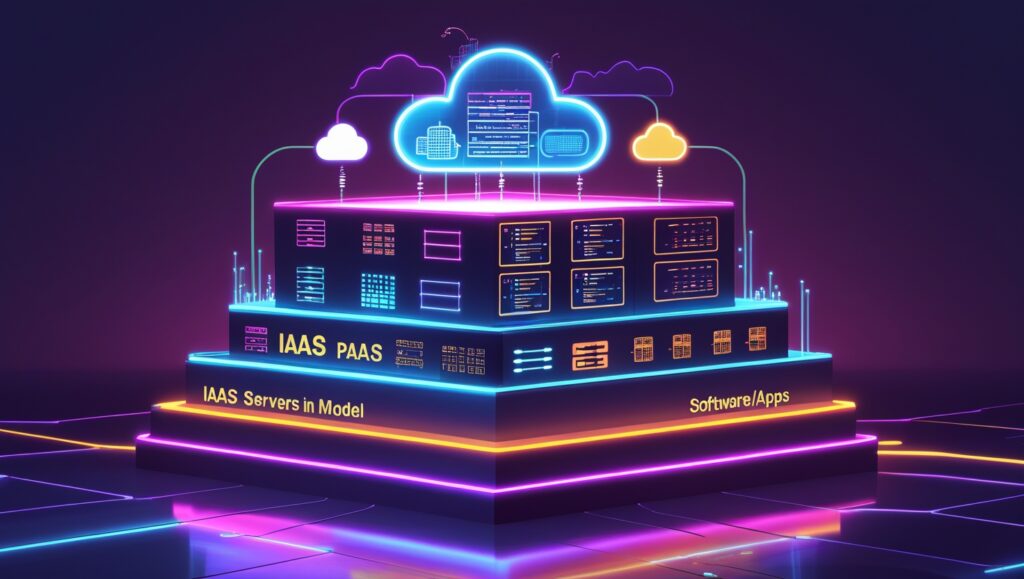Cloud computing has revolutionized the way we use technology in our personal and professional lives. From storing files to running complex business applications, cloud computing is powering the digital world around us. In this comprehensive guide, we’ll break down what cloud computing is, explain its different types and service models, explore the major benefits, and look at real-world examples of how it’s being used today.
What is Cloud Computing and How Does It Work?

Cloud computing refers to the delivery of various services over the internet, including storage, servers, databases, networking, and software. Instead of owning and maintaining physical hardware, users can access these resources on-demand from cloud providers like Amazon Web Services (AWS), Microsoft Azure, or Google Cloud.
A simple example is Google Drive, where you can store files and access them from anywhere, without needing a physical storage device. This concept extends to businesses that now rely on cloud infrastructure to run websites, manage databases, and even perform AI computations.
Cloud computing enables:
- On-demand access to resources
- Pay-as-you-go pricing
- Remote accessibility
Types of Cloud Computing
There are four main types of cloud deployment models. Each has unique features that cater to different needs:

Public Cloud Computing
A public cloud is owned and operated by third-party cloud service providers who deliver services over the internet. Users share the same infrastructure but have isolated access.
✅ Examples: AWS, Microsoft Azure, Google Cloud
✅ Use-case: Ideal for startups and businesses looking to reduce IT costs.
Private Cloud Computing
A private cloud is used exclusively by a single organization. It can be hosted on-premises or by a third-party provider, offering enhanced control and security.
✅ Use-case: Best for banks, government agencies, and industries with strict compliance needs.
Hybrid Cloud
Combines public and private clouds to allow data and apps to move between them. This offers greater flexibility and optimized existing infrastructure.
✅ Use-case: Companies needing both scalability and control.
Community Cloud
A shared cloud infrastructure for organizations with common goals or compliance needs, such as healthcare groups or universities.
Cloud Computing Service Models: IaaS, PaaS, and SaaS Explained
Cloud computing is also divided into three service models, each offering a different level of control, flexibility, and management.

Infrastructure as a Service (IaaS)
IaaS provides virtualized computing resources like servers, storage, and networking over the internet. Users manage the OS and apps while the provider handles the hardware.
✅ Example: AWS EC2
✅ Use-case: Startups and developers building custom environments.
Platform as a Service (PaaS)
PaaS offers a ready-to-use platform for developing, testing, and deploying software. Developers don’t have to manage servers or storage.
✅ Example: Google App Engine
✅ Use-case: Software development with speed and ease.
Software as a Service (SaaS)
SaaS delivers applications over the internet on a subscription basis. It’s the most common model for end-users.
✅ Examples: Dropbox, Zoom, Microsoft 365
✅ Use-case: Individuals and businesses using ready-made software.
Key Benefits of Computing for Businesses and Individuals
Cloud computing offers numerous benefits that make it a powerful solution for individuals and enterprises alike.

Cost Efficiency
No upfront cost for hardware or software. Pay only for the resources you use, saving money especially for small businesses.
Scalability
Scale your resources up or down based on demand. For instance, an e-commerce site can handle traffic spikes during sales using cloud scaling.
High Availability & Disaster Recovery
Cloud platforms offer built-in data backups, failover systems, and 99.9% uptime guarantees to ensure business continuity.
Remote Accessibility
Access your data and applications from anywhere, supporting remote work and global collaboration.
Enhanced Security
Cloud providers invest heavily in cybersecurity with firewalls, encryption, and multi-layered protection.
Real-Life Examples of Cloud Computing Applications
Cloud computing is everywhere — from the apps on your phone to global business operations.

Google Drive
A cloud-based storage platform where users store and share documents, spreadsheets, and media files. It exemplifies SaaS for productivity.
Amazon Web Services (AWS)
The most comprehensive IaaS platform that powers websites, databases, AI, and big data applications used by enterprises like Netflix and LinkedIn.
Netflix
Streams content to over 200 million users worldwide using AWS’s scalable infrastructure.
Dropbox
A cloud file hosting service allowing real-time sync and backup of files across devices.
Conclusion: Why Cloud Computing Is Essential in Today’s Digital World
From personal file storage to enterprise-level computing, cloud computing is the foundation of modern digital innovation. Its ability to deliver scalable, secure, and cost-effective solutions makes it a preferred choice for everyone — from students to Fortune 500 companies.
Understanding the types, service models, and benefits of cloud computing can help individuals and organizations make smart technology decisions for the future.




Pingback: Free AI Tools 2025: Best Picks for Students & Creators - Best Blogging Site!